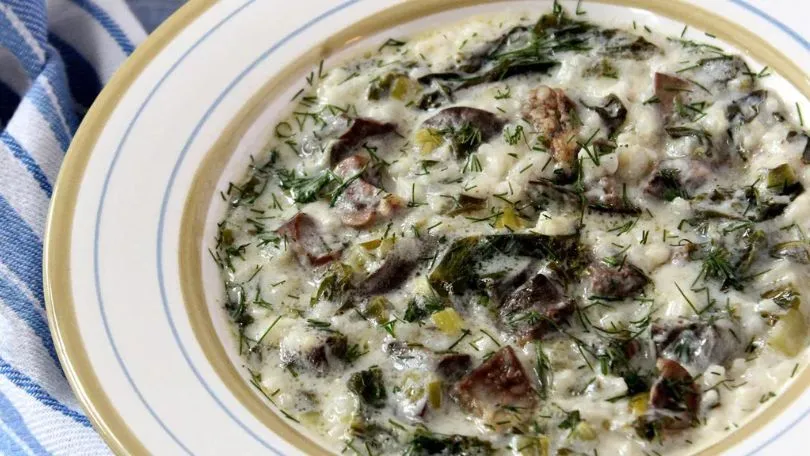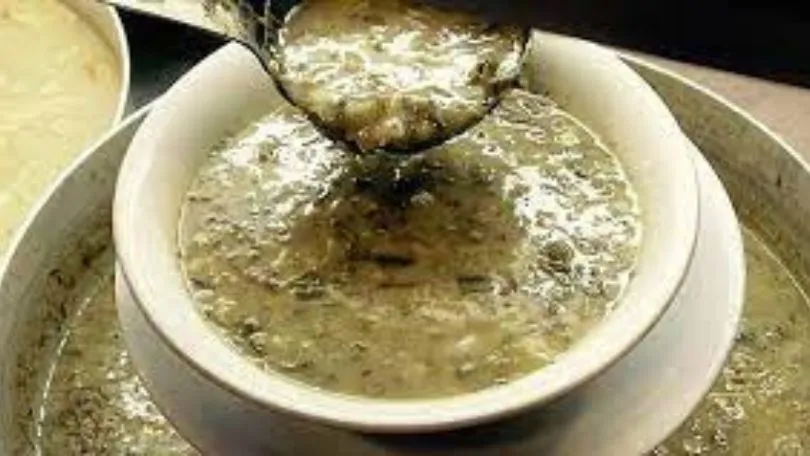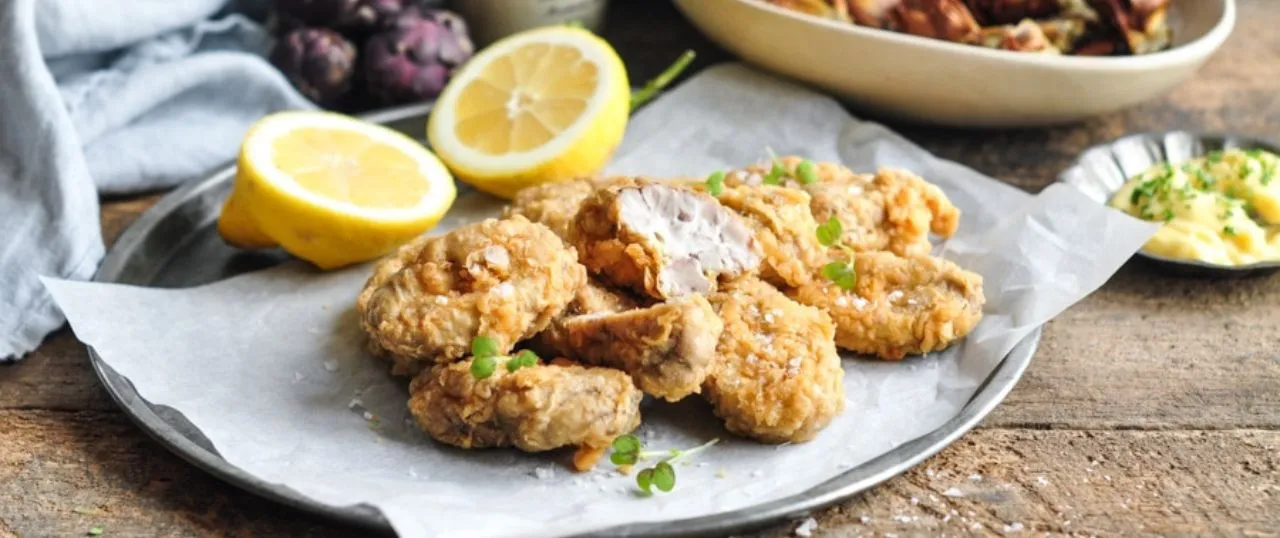If you’re like most people, you probably have a few preconceived notions about Greek food. You might think of dishes with delicious Greek cheese, such as moussaka, Greek salad, Spanakopita, and even baklava – all of which are delicious but relatively standard fare.
However, Greece is home to some truly unique culinary creations you need to try there. From dubious-sounding combinations to a wonderful fragrant stew to traditional and very strange-smelling soups, the Greeks know how to put together some pretty weird combinations. So if you’re feeling adventurous or just curious, let me introduce you to some of Greece’s strangest and perhaps weird Greek foods. Trust me, this is not just Marks and Spencer food; this is strange Greek food.
Fried lambs’ brains

Greece is home to some pretty unusual dishes. Deep-fried lambs’ brains might just be one of the most interesting and perhaps even the most delicious.
This dish is exactly what it sounds like: lambs’ brains that have been deep-fried. The result is a crispy, crunchy on the outside and a soft, custardy interior treat that is surprisingly tasty.
Fried lambs’ brains are typically served with lemon juice and pepper, but you can have them with a dipping sauce or two if you prefer. Popular choices include tzatziki (a cucumber-yoghurt dip) or skordalia (a garlic-potato dip). No matter what you choose to dunk your brains in, you’re sure to enjoy this unique dish.
So, if you’re feeling adventurous, why not give fried lambs’ brains a try? You might just be surprised at how much you like them.
Lambs head

Lambs head is a traditional Greek dish often served on Easter Sunday or special occasions. This scrumptious dish consists of a whole roasted head of lamb, which is then deboned and served with various vegetables. Lambs head is usually served with potatoes, carrots, green beans, and peas. Sometimes the dish is also served with rice.
Lambs’ head is considered to be a delicacy in Greece. It is said to date back to ancient times when lambs were sacrificed during religious ceremonies. Today, the lambs’ head is still considered a symbol of good luck and prosperity.
So, if you’re feeling adventurous, why not try making lambs head at home. The dish may take some time to prepare, but it’s definitely worth the effort. Trust me, your guests will be impressed.
Sea urchin salad

For me, there’s something about the briny, slightly sweet taste of fresh sea urchins that just screams “Greece”. This unique seafood is definitely a must-try while you’re in the country, and for beginners, one of the best ways to enjoy it is in a traditional Greek salad.
Sea urchin salad is basically a chopped up mixture of sea urchins, olive oil, lemon juice, and sometimes onions or other herbs. It’s simple but delicious and makes for a perfect light lunch or starter.
If you’re feeling adventurous, you can even try eating the sea urchins whole – just pop them in your mouth and let the deliciousness melt on your tongue. But be warned, they can be quite an acquired taste!
So next time you’re in Greece, seek out some fresh sea urchins and try this traditional dish. You won’t be disappointed.
Magiritsa: A Very Traditional Greek Food

Magiritsa is a Greek dish that is traditionally made with lamb offal. The word “magiritsa” means “little stomach” in Greek, and the dish is often made with lamb tripe. Magiritsa is usually served as a soup and is often eaten after Easter Sunday Mass to break the Lenten fast.
The soup is made by simmering lamb offal in water with onion, garlic, dill, and lemon. Once the soup has simmered for a few hours, it is thickened with egg and lemon juice. Some recipes also call for adding rice or barley to the soup.
Magiritsa is a hearty and filling soup and is often considered comfort food in Greece. The soup is usually served with bread, and it can also be topped with feta cheese or yoghurt.
Kokoretsi

Kokoretsi is a traditional Greek dish that dates back to ancient times. Kokoretsi is a dish made of lamb intestines and various other organs, such as the liver, heart, and lungs. The intestines are typically filled with rice, herbs, and spices, then wrapped in the cortex (the animal’s stomach lining) and grilled.
The word “kokoretsi” comes from the Turkish word “koku,” which means “intestine.” The dish was most likely introduced to Greece by the Turks during their occupation of the country in the late medieval period. Kokoretsi became a popular street food in Greece during the 19th century. It was often sold by vendors who would grill the dish on large skewers over an open fire.
Today, kokoretsi is still a popular dish in Greece and is often served at weddings and other special occasions. It can be found on the menus of many Greek restaurants in Greece and abroad.
Sausage-stuffed quail

Sausage-stuffed quail is a Greek dish typically made with pork sausage, quail eggs, and various spices. The quail eggs are hard-boiled and then stuffed into the sausage before it is cooked. This dish is often served as an appetizer or main course.
The sausage used in this dish can vary depending on region or preference. Sometimes, lamb or beef sausage may be used instead of pork. The spices used to flavour the dish may also vary, but common choices include salt, pepper, oregano, and garlic.
This dish can be either baked or grilled. If baking, the quails should be placed in a baking dish with the stuffing side up. They can then be covered and baked at a moderate temperature until cooked. For grilling, the quails should be placed on a preheated grill with the stuffing side down. They should be grilled for several minutes per side or until cooked through.
Sausage-stuffed quail is a unique dish that combines the flavours of Greek sausage and quail eggs. It is perfect for those who enjoy unusual flavour combinations and want to try something new.
Patsas (the weird and very smelly Greek soup)

Patsas is a traditional Greek dish consisting of a thick soup made with sheep’s head and feet. It is said to be an acquired taste, but once you acquire it, you’ll be hooked for life.
There are many different ways to make patsas, but the basic ingredients are always the same: sheep’s head and feet. Some recipes call for adding other meats, such as lamb or beef, but purists will tell you that these are not true patsas. The soup is usually flavoured with garlic, onion, and tomato and sometimes also includes lemon juice or vinegar.
If you’re feeling adventurous, why not try making patsas at home? It’s not as difficult as it might sound, and you’ll be able to impress your friends with your authentic Greek cuisine. Just make sure they have a strong stomach.
Conclusion
Well, there you have it, my choices for very unusual Greek Foods you must try when in Greece. As I said at the beginning, the Greeks know how to put together some pretty weird combinations. If you want to try any of these foods, just ensure the ingredients are fresh and local and don’t forget to get a photo or two of you eating them to show everyone.
Thank you

